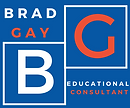
With the withdrawal of National Standards I have had a lot of schools inquiring about the best way forward as far as reporting to BOT’s etc. The vast majority have tweaked slightly what they have always done and are basically moving to the curriculum levels model. Many choose to break the levels down due to the broadness of the levels themselves. This could be beginning, proficient, transitioning out, transitioning in etc.
The use of data is still important and should drive the pursuit of accelerating the students within your school. Having said that it is also a good idea for schools to evaluate exactly what they are assessing for and ask the question is the data informing the direction or aspirations we have for our students? After all, “Weighing the pig more often doesn’t make it any fatter” but weighing the pig to decide which diet will get faster growth does.
Here are some tips to help you on this journey. I have also prepared a google doc template that may help you plan this process.
I have based this approach on Steele and Boudett’s work.
There are basically three steps to follow.

Step one PREPARE
Preparing is about making sure a structure is in place for data analysis and to evaluate the existing data. It is important in the preparation phase that a collaborative team is formed to work on this. There may well be a need to ensure that this team has access to building literacy capacity about assessment practice.
Step two INQUIRE
Inquiring is about researching and acquiring the knowledge about how to increase student learning. This is about engaging the whole staff in honest conversations about what is working and what isn’t. This can require staff to show some vulnerability.
This involves the creation of a data overview and staff to really dig into the existing data. It will also require staff to examine the instruction in the school. It is all about conducting an autopsy without blame.
Step three ACT
Acting is about what to do to improve instruction and assess whether the changes put in place have made a difference. Linking this aspect to a Teaching As Inquiry method can be beneficial. It’s about developing a plan and monitoring the progress of the plan followed by further refinement and assessment. This should be a formative process that is responding to real data about students learning needs. It should also have observations focused on improving instruction, because good instruction involves formative assessment throughout. The plan should also have measurable goals and be undertaken by all teachers throughout the school so that collaborative comparisons and refinements can be made.

